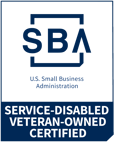Now that we can cautiously look forward to a post-COVID future, we can anticipate a mostly permanent shift from on-premises workplaces to the remote environment. As a large share of the workforce continues to work remotely, their organizations are concerned with finding mitigation for the lack of direct in-person management. Cultivating a fully engaged workforce can be one effective response.
Studies show that a shocking level of employees are not engaged with their work. In fact, a large percentage are actively disengaged. You may already manage some of these employees. You understand that it is a problem, but you are not sure what you can do to mitigate the situation.
Fortunately, cultivating an engaged workforce is not impossible. However, it is important to understand that you cannot directly make an employee become engaged. You can, however, foster and enhance an employee’s own desire to fully engage in their work.
What is Employee Engagement?
Before we can cultivate employee engagement, we need a common understanding of what it is. In “The Engagement Equation”, the authors describe employee engagement as the maximum alignment of two important factors:
- Employee Contribution: The employee is willing and able to perform mission-critical tasks successfully.
- Employee Satisfaction: The employee can align their work with their values, career aspirations, talents, and development goals.
At full engagement, an employee is receiving maximum satisfaction from their work while delivering maximum contribution to the organization. For any individual employee, maximum alignment may not remain constant. It may fluctuate over time as they navigate work responsibilities. Also, engagement is cultivated at the individual employee level. It is rarely if ever achievable through one-size-fits-all approaches.
Facilitating employee engagement is more a matter of helping employees understand the variables impacting their engagement, and then cultivating their ability to become fully engaged.
Variables Impacting Employee Engagement
So, what variables can you affect to influence both employee contribution AND satisfaction? Here are three areas where you can impact an individual employee’s ability and desire to engage.
- Self-Motivation: Employee motivation comes primarily from within the individual. External factors such as compensation, reward, or punishment can influence motivation temporarily, but over time require repetition or raising the ante. Factors internal to the employee can be either positive (e.g., team loyalty) or negative (e.g., guilt). Intrinsic factors (e.g., keen interest or passion for the work) are the strongest influencers of self-motivation.
- Personal Purpose: Every employee needs a reason to engage in their work, a sense of purpose. Their purpose may relate to their personal aspirations, such as their career, sense of achievement, life goals). They may also find purpose in the mission of their organization, wanting to contribute to a worthy goal. Ideally, the organizational role they perform may serve to strengthen their sense of purpose at both the personal and organizational levels.
- Workplace Conditions: There are certain prerequisites for employees to fully engage in their work responsibilities. They desire a degree of autonomy to perform their work and achieve expected results. They want to work toward mastery of the work they do. They need to know that they are performing well and meeting expectations. And finally, they want to be confident that the work they perform contributes value to the organization.
Managers who can identify employee needs in these three areas can begin to influence cultivate a workplace of fully engaged employees.
Cultivating Fully Engaged Employees
Imagine you want to help one of your direct-report colleagues find more engagement with their work. Here are a few things you can focus on:
- Clarify Expectations: Help the employee understand the scope and value of their position and responsibilities. Describe what “good” performance looks like in a way they can fully comprehend. Explain how their job or role contributes to the organization’s established strategic priorities. Give them confidence that they are engaged in something important (i.e., aligned with their sense of purpose and efficacy).
- Develop Capabilities: Assist the employee in developing the skills, knowledge, and abilities that will help them meet and exceed expectations. Highlight opportunities to progress toward mastery of the work they do. Provide them the task autonomy and safe-to-fail environment to build confidence in their ability to solve problems and achieve expectations.
- Recognize Performance: Monitor employee work performance to identify opportunities for recognition that can strengthen their engaged behavior. Highlight their successes and gently coach them to resolve their deficiencies. Affirm their value to the organization.
Finally, remember that employees really want to engage in their work. Unfortunately, they are not always in a work environment that allows them to act effectively on this desire. However, if you can establish the prerequisites and remove obstacles to employee self-engagement, you can enhance the power of your workforce, one employee at a time.
Inspiring Self-Driven Employee Engagement
If you are interested in learning more about facilitating employee engagement at work, join us at our Operational Change Management (OCM) Week Courses (August 2021): Facilitating Employee Engagement, Encouraging Employee Learning and Evaluating Employee Performance. Where you'll be able to you can enhance your engagement skill set and learn to build a change-ready, adaptive workforce. This week features individual full-day sessions on enabling employees to engage, learn, and perform under VUCA conditions (Vulnerability, Uncertainty, Complexity, Ambiguity) such as during strategic change initiatives or workplace status quo disruption.














